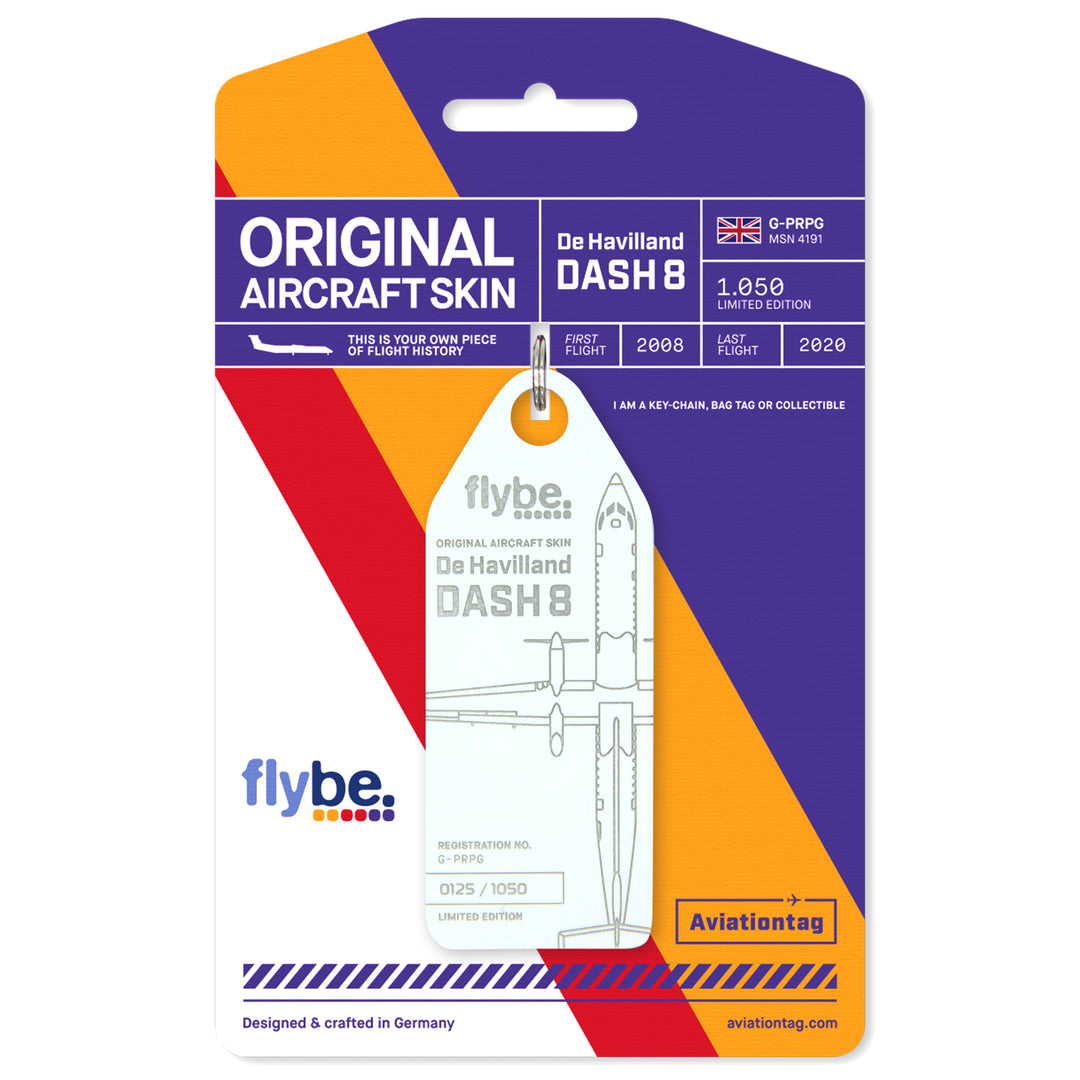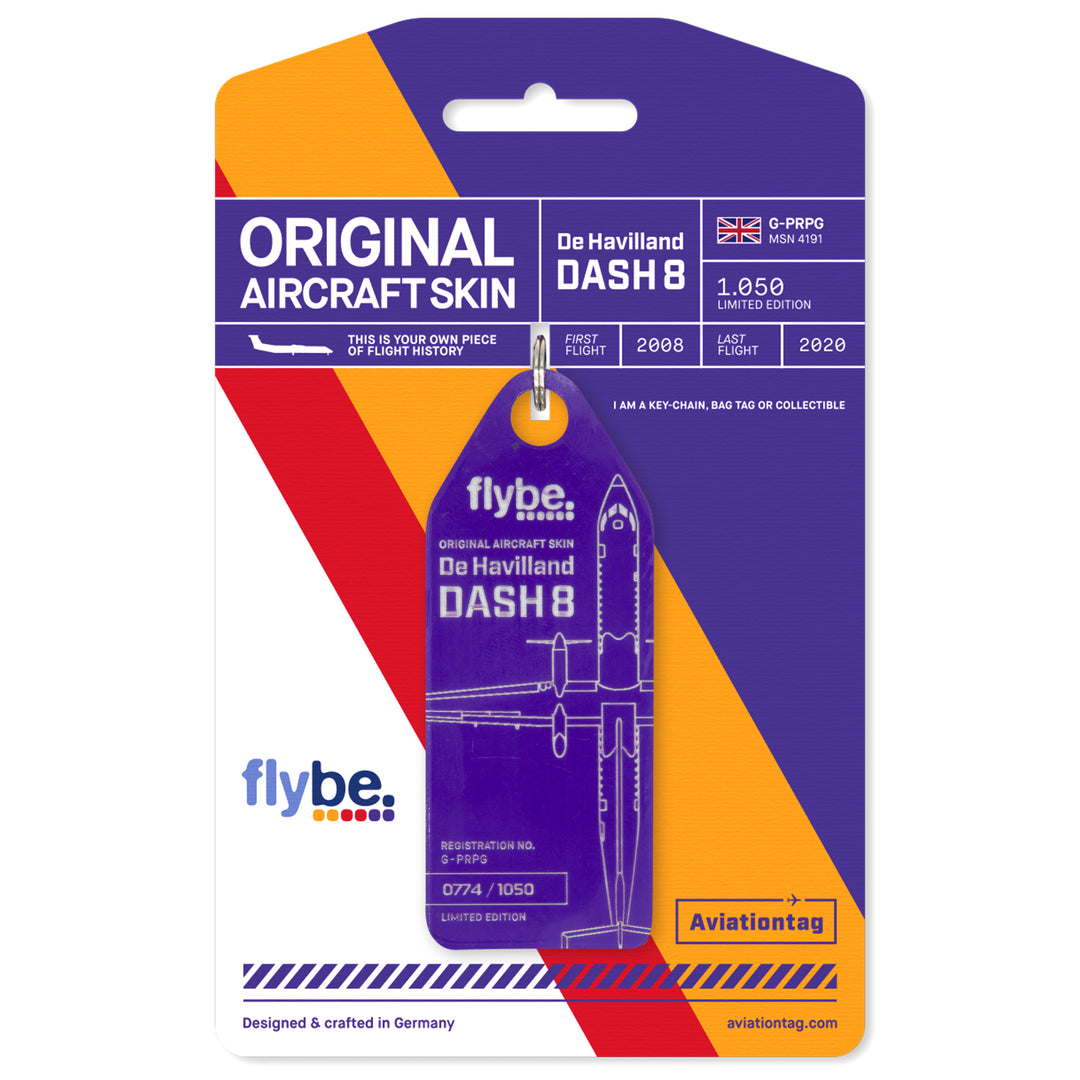Purple skies, lasting memories: G-PRPG and flybe’s arc
Few airline identities were as tightly bound to a single type as flybe was to the Dash 8/Q400. The airframe G-PRPG (msn 4191) traces that story end-to-end: test-registered as C-FNQQ, built in 2008, then worked dense regional schedules before the 2020 groundings and eventual 2024 teardown. Its Mode-S 4071BA, 78-seat layout and high-cycle profile place it squarely inside flybe’s network economics—and explain why fragments of its fuselage now survive as small, tangible records of that era.

G-PRPG began life in North America as N191WQ with Republic Airways on United Express services. In 2015, during a Denver departure, the aircraft suffered a No. 2 main-gear tyre failure and returned safely—a footnote that documents, rather than defines, its career. Late 2016 brought UK registration as G-PRPG; in flybe service it typically flew in Y78 configuration. Like its peers, it was powered by two Pratt & Whitney Canada PW150A turboprops. The “Q” in Q400 references the series’ active noise and vibration suppression, a system that tempered cabin sound relative to earlier Dash-8 variants.
After flybe’s first administration in March 2020, G-PRPG went into storage and was broken up at Saarbrücken (SCN) in 2024—with sources aligning on the place and year even if exact months differ.
flybe: rise, reset, fall
flybe traces its roots to 1979 (Jersey European Airways), rebranding via British European (2000) to flybe (2002). A decisive leap came with the BA Connect acquisition in 2006/07, after which flybe was widely described as Europe’s largest regional airline; a 2010 IPO followed. The brand identity crystallised around the Dash 8/Q400, including a 2014 plan to absorb 24 ex-Republic Airways Q400s—later restructured to 15 via NAC—helping cement flybe’s status as the world’s largest Q400 operator of the period.
By early 2020 flybe operated ~38% of UK domestic flights, carried ~8 million passengers annually and employed 2,332 people, but persistent financial strain met the sudden COVID demand shock. A mooted £100m state loan did not materialise; the airline entered administration in the early hours of 5 March 2020, with the loss of 2,000+ jobs and the network grounded. Administrators from EY were appointed the same morning.
The brand was acquired out of administration by Thyme Opco (linked to Cyrus Capital) and relaunched in April 2022 as a Birmingham-based carrier with an all-Q400 fleet plan. The restart remained modest in scale and vulnerable to supply/operations shocks.
On 28 January 2023 flybe ceased trading again and entered administration. The CAA advised passengers not to go to airports; administrators (Interpath Advisory) confirmed ~75,000 future bookings would not be honoured. Of 321 staff, 277 were made redundant; at shutdown the airline flew 21 routes to 17 destinations with eight leased Q400s from bases including Belfast City and Birmingham.


G-PRPG’s dismantling at Saarbrücken produced fuselage sections with original paint, primer and service wear intact. We were not consulted before cutting—the material reached the workshop as pre-cut panels. That single fact determined the palette: the panels available to work with were purple and white, the most recognisable colours of flybe’s brand era.
From there the process was straightforward and conservative: stability checks; trimming to final outlines; careful deburring for daily handling; light cleaning to retain authentic wear; and serialisation to keep provenance traceable from airframe to artifact. This is an officially licensed edition, aligning both material use and brand elements with the rights holder.
As a single case study, G-PRPG encapsulates flybe’s broader arc: a network built on frequency and regional access, a brand framed by the Q400, and an ending written twice, in 2020 and 2023. Upcycling part of the airframe does not rewrite that history; it ensures there is something concrete left to hold, inspect and discuss.
If you flew flybe—or even G-PRPG—what lingers for you: specific routes, the PW150A sound signature, cabin atmosphere, or that nacelle promise of “Faster than road or rail”?








